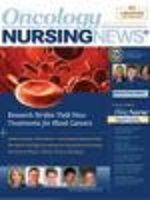Big Changes Anticipated in Treatment Paradigms
Clinicians who treat patients with multiple myeloma have witnessed a sea change in the past 15 years.
Jesús F. San Miguel, MD, PhD
Clinicians who treat patients with multiple myeloma have witnessed a sea change in the past 15 years. Yet another revolution appears right around the corner, with emerging monoclonal antibodies generating promising results in clinical trials and research on risk stratification revealing how to identify which patients should be treated early, according to Jesús F. San Miguel, MD, PhD.
San Miguel delivered the Ham-Wasserman Lecture, “Multiple Myeloma: A Modern Model for Scientific and Clinical Progress,” during the Annual Meeting of the American Society of Hematology (ASH). He is a professor and administrator at the Clinica Universidad De Navarra, Pamplona, Spain.
Daratumumab and Elotuzumab
During his lecture, San Miguel noted the encouraging clinical trial findings about two new agents in development, daratumumab and elotuzumab, presented during the conference. Patient advocates and clinicians who treat individuals with multiple myeloma have been anticipating research data about these agents for some time now, particularly since the FDA has granted breakthrough therapy status to both agents in multiple myeloma settings. In a phase Ib trial reported at ASH, daratumumab combined with standard frontline therapies induced a dramatic improvement in outcomes without additional toxicity for patients with multiple myeloma.1
Infusionrelated reactions were the only added toxicity seen with daratumumab when combined with a bortezomib-containing regimen. All infusion reactions were grade 1 and resolved with supportive care, and most other side effects reported in the study were attributed to the backbone therapy.
Findings from another phase Ib/II study presented at ASH showed that treatment with elotuzumab in combination with lenalidomide and dexamethasone demonstrated encouraging efficacy in patients with relapsed/refractory multiple myeloma,2 and this, along with the overall safety and durability of the responses observed, support further phase III clinical development of elotuzumab in the relapsed/ refractory setting, as well as for those newly diagnosed with the disease.
Multiple Treatment Options
San Miguel said it has become clear that the disease “should not be considered a single entity, but different entities,” and thus, multiple treatment options will exist. For example, he said, many thought there would be no role for melphalan after last year’s ASH meeting in New Orleans, which saw the paradigm-shifting results from Thierry Facon, MD, on lenalidomide and low-dose dexamethasone.3 But San Miguel said that has turned out not to be the case.
An increased understanding of the genetics behind myeloma is building awareness that treatments must be tailored to the individual, said San Miguel. Identifying and measuring key drivers of the disease holds great promise, he noted, since this will give clinicians information to create combination therapies for more patients. While survival has increased from the abysmal rates of 1 to 3 years from previous eras to 5 to 7 years today, more can be done, he said.
San Miguel also reviewed an area where his research team, the Spanish Myeloma Group, made a major contribution in 2013: risk stratification of those patients with precancerous disease who show signs of smoldering myeloma and methods of identifying those at highest risk of progression so that they can receive early treatment. He was the senior investigator on a phase III trial in which patients were randomized to receive lenalidomide and dexamethasone or observation, the latter being the usual standard of care for individuals who have an increase of plasma cells in the bone marrow that produce the monoclonal immunoglobulin (IgG), but do not have any myeloma symptoms.4
San Miguel outlined the prognostic factors that allowed the research team to segment out the high-risk group, which included plasma cell bone marrow infiltration, IgG levels, and urinary protein levels.
“You want to give the patient what is needed, and nothing more than is needed,” San Miguel said.
This approach produced improved 3-year survival rates among the high-risk patients identified and treated by the Spanish team during the study; 94% of those who were treated were still alive at 5 years, compared with 80% in the untreated group.4
References
- Moreau P, Mateos M-V, Bladé J, et al. An open-label, multicenter, phase 1b study of daratumumab in combination with backbone regimens in patients with multiple myeloma. Presented at: 2014 ASH Annual Meeting; December 6-9, 2014; San Francisco, CA. Abstract 176.
- Richardson PG, Jagannath S, Moreau P, et al. Final results for the 1703 phase 1b/2 study of elotuzumab in combination with lenalidomide and dexamethasone in patients with relapsed/refractory multiple myeloma. Presented at: 2014 ASH Annual Meeting; December 6-9, 2014; San Francisco, CA. Abstract 302.
- Facon T, Dimopoulos MA, Dispenzieri A, et al. Initial phase 3 results of the First (Frontline Investigation Of Lenalidomide + Dexamethasone Versus Standard Thalidomide) Trial (MM-020/IFM 07 01) in newly diagnosed multiple myeloma patients ineligible for stem cell transplantation. Presented at: The 55th ASH Annual Meeting; December 7-10, 2013; New Orleans, LA. Abstract 2.
- Mateos MV, Hernández MT, Giraldo P, et al. Lenalidomide plus dexamethasone for high-risk smoldering multiple myeloma. N Engl J Med. 2013;369(5):438-447.


